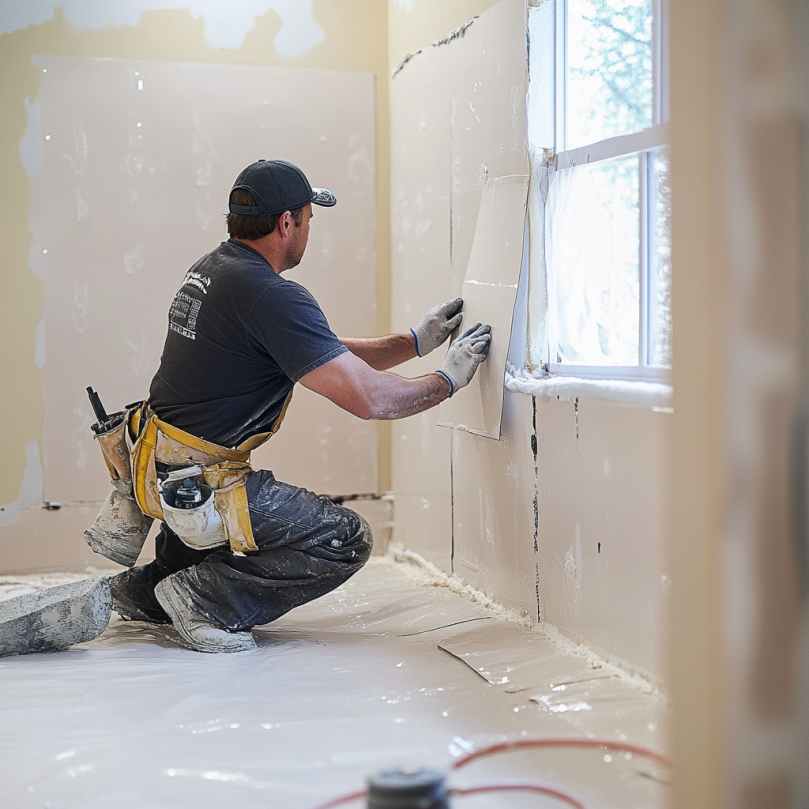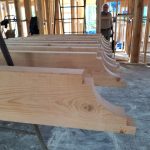
Waterproofing in Bathroom Remodeling: Why It Matters
Waterproofing in Bathroom Remodeling: Protecting Your Investment
Waterproofing in bathroom remodeling is one of the most important—but often overlooked—elements of home renovation. Whether you’re updating a small powder room or doing a full master bath overhaul, proper waterproofing ensures long-term durability, protects your home’s structure, and reduces the risk of mold or costly repairs.
Let’s explore the essentials of waterproofing in bathroom remodeling, why it’s necessary, and how to do it right.
What Is Waterproofing in Bathroom Remodeling?
Waterproofing in bathroom remodeling is the process of applying moisture barriers to surfaces that are frequently exposed to water or humidity. This includes:
- Shower walls and floors
- Bathtub surrounds
- Bathroom floors (especially around tubs and toilets)
- Behind vanities and sinks
- Beneath tile, stone, or wood flooring
It prevents water from seeping through to drywall, subflooring, or joists where it can cause rot, mold, or structural damage.
Why Waterproofing Is Crucial in Bathrooms
Prevents Water Damage to Structural Materials
Bathrooms naturally deal with moisture. If water penetrates your tile or grout and reaches drywall or wood, it can lead to:
- Warped floors
- Soft or crumbling walls
- Ceiling leaks in lower levels
- Costly structural repairs
Stops Mold and Mildew Growth
Mold thrives in damp, dark places. Inadequate waterproofing allows moisture to collect behind walls and under floors, creating the perfect conditions for mold infestations.
Extends the Life of Your Remodel
A bathroom remodel is a significant investment. Waterproofing in bathroom remodeling helps maintain the look and functionality of your new finishes for decades.
Protects Adjacent Rooms
Water doesn’t always stay in the bathroom. Poor waterproofing in bathroom remodeling can lead to damage in nearby rooms, hallways, or even foundation slabs.
Key Areas That Require Waterproofing in a Bathroom Remodel
- Showers and Wet Walls: These are the most critical areas. A waterproof membrane (such as a liquid-applied coating or waterproofing sheet) should be applied beneath tiles and behind cement boards.
- Bathroom Floors: Especially important for walk-in showers or wet rooms. Floors need a slope toward the drain and should include a waterproofing membrane under tile.
- Around Fixtures: Sink, toilet, and bathtub installations need waterproof sealants and backing materials to prevent leaks and damage.
- Corners and Seams: Water often seeps into joints where the floor meets the wall or where two walls meet. Reinforced waterproofing tape or mesh is necessary at these points.
Types of Waterproofing Systems for Bathrooms
Liquid Waterproofing Membranes
- Rolled or brushed on like paint
- Forms a seamless, flexible barrier
- Ideal for walls and floors
Sheet Membranes
- Preformed plastic or rubber sheets
- Applied to surfaces before tiling
- Durable and effective for high-moisture zones
Cementitious Waterproofing
- Mixable powder applied to surfaces
- Used for concrete or masonry
- Often used in commercial applications
Waterproof Backer Boards
- Replace traditional drywall in wet areas
- Come pre-treated to resist water
- Used behind tiles and around tubs/showers
Common Waterproofing Mistakes to Avoid
- Skipping waterproofing behind tiles (tiles are not waterproof)
- Using green board drywall instead of cement or waterproof backer board
- Improper sealing around plumbing penetrations
- Failing to waterproof corners and joints
- Not checking for waterproofing compatibility with tile adhesives
Waterproofing Best Practices During a Bathroom Remodel
- Always apply waterproofing before tiling
- Use vapor barriers for exterior bathroom walls
- Install a proper slope for shower pans and floors
- Double seal all plumbing fixtures
- Conduct a flood test before tiling (fill the area with water and test for leaks)
Hiring an experienced contractor ensures these steps are followed correctly, reducing the risk of future issues.
Long-Term Peace of Mind Through Waterproofing in Bathroom Remodeling
Alt Text: Waterproofing Membrane Installation in Shower
Image Title: Protecting Your Bathroom from Water Damage
Image Description: An image showing a worker applying a waterproofing membrane (e.g., liquid membrane or sheet membrane) to the walls or floor of a shower during construction. Image Link: Protecting Your Bathroom from Water Damage.webp
Waterproofing in bathroom remodeling isn’t just about sealing surfaces—it’s about protecting your investment and your home. By properly addressing every wet area with high-quality systems and avoiding common mistakes, you reduce the risk of mold, structural damage, and expensive repairs. Waterproofing in bathroom remodeling ensures your space remains beautiful, safe, and functional for years to come.
Ready to Waterproof Your Remodel the Right Way?
At Mazzamuto Construction, we believe great spaces start with thoughtful planning and skilled craftsmanship. Whether you’re exploring ideas or ready to build, our team is here to guide you every step of the way. Let’s bring your vision home—reach out for a personalized consultation today!
Frequently Asked Questions
1. Is waterproofing really necessary for all bathrooms?
Yes. Every bathroom, regardless of size, deals with moisture. Even powder rooms should have moisture-resistant materials, and full bathrooms require proper waterproofing in all wet areas.
2. Can I waterproof a bathroom myself?
DIY waterproofing is possible with the right materials and attention to detail, but mistakes can be costly. Hiring a professional ensures thorough, code-compliant installation.
3. How much does waterproofing add to the remodel cost?
Waterproofing typically adds 5-10% to your remodel cost but can save thousands in potential repairs. It’s a small investment with long-term benefits.
4. How long does bathroom waterproofing last?
When done correctly, waterproofing can last 10-20 years or more. Regular maintenance and sealing can extend its effectiveness.
5. What happens if I skip waterproofing behind my tiles?
Water will eventually seep through grout and tile, leading to rot, mold, and possibly structural damage. Tiles alone are not waterproof.
Key Takeaways
- Waterproofing in bathroom remodeling protects against mold, rot, and long-term water damage.
- All wet areas—showers, tubs, and bathroom floors—must be properly waterproofed beneath tile.
- Liquid membranes, sheet systems, and waterproof backer boards are among the most effective solutions.
- Avoid common mistakes like relying on tile as a waterproof surface or failing to seal corners.
- Investing in waterproofing during remodeling pays off with peace of mind and extended bathroom life.




